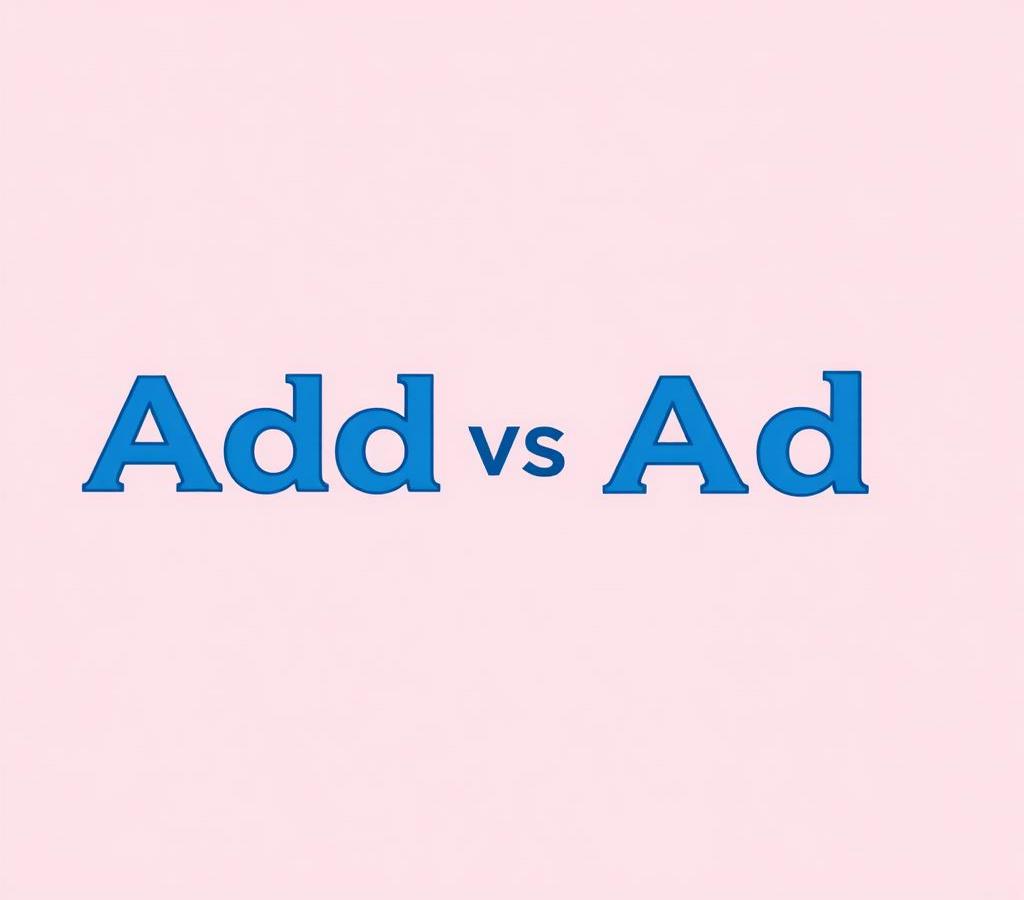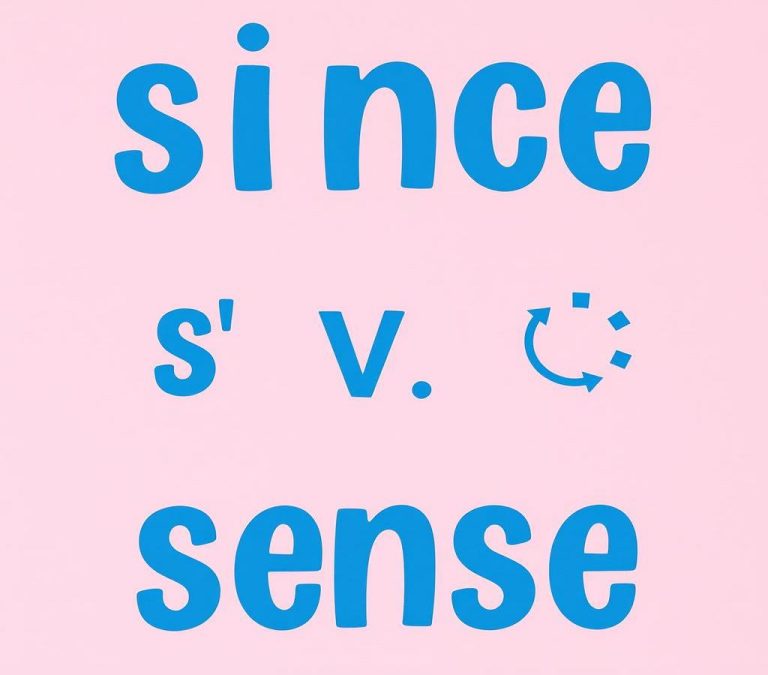Add vs Ad: Grammar Usage, Meaning & Correct Examples
It’s easy to mix up “add” and “ad” because they sound the same, but they have different meanings and uses. “Add” means to combine or increase something, usually numbers or items. On the other hand, “ad” is short for advertisement, which promotes a product or service. Understanding the difference helps in clear communication.
Quick Answer
The key difference between “add” and “ad” lies in their meanings and uses:
- Add: a verb meaning to combine or include something, e.g., “add sugar to coffee.”
- Ad: short for “advertisement,” a noun referring to a commercial message, e.g., “watch the ad before the video.”
In summary, use “add” as a verb, and “ad” as a noun for advertisement.
Why There is Confusion
The words “add” and “ad” are often confused by people, including native English speakers. This confusion primarily arises from how similar they sound when spoken aloud. Both words are pronounced as /æd/, making it difficult to distinguish them in conversation. Though they sound alike, they have distinct meanings and uses, which makes understanding the context vital for proper usage. In this article, we will clarify the differences between “add” and “ad,” explain their meanings, and provide examples of their correct usage.
What Does “Add” Mean?
The word “add” is a verb with several closely related meanings:
- To combine or join together: When you add two or more quantities, you combine them to form a total. For example, “If you add 2 and 3, you get 5.”
- To increase: Adding something can mean you are increasing a quantity or quality. For example, “Can you add more salt to the soup?”
- To enhance: “Add” can also mean to include additional features or qualities to improve something. For example, “The new manager added a lot of value to the team.”
- To say more: “Add” might also mean to include more information in a conversation or text. For example, “He added a few remarks at the end of his speech.”
What Does “Ad” Mean?
The term “ad” is a noun and generally refers to “advertisement.” An ad is a public notice promoting a product, service, or event. Here are different forms of ads:
- Print ads: These appear in newspapers, magazines, or flyers.
- Online ads: These include banner ads, social media promotions, and video ads on platforms like YouTube.
- Television ads: Commercials that run during TV shows.
- Radio ads: Audio ads broadcasted on radio stations.
- Outdoor ads: Billboards and posters in public spaces.
Unlike the word “add,” “ad” is solely a noun and does not function as a verb.
Differences in Meaning and Use
Understanding the differences between “add” and “ad” involves looking at several aspects, including parts of speech, verb forms, and contextual meaning.
Differences in Parts of Speech
“Add” is a verb. This means it describes an action performed by the subject of a sentence. Examples include:
- She wants to add more members to the team.
- We need to add the final touches to our project.
“Ad” is a noun. This means it is a person, place, thing, or idea. Examples are:
- I saw an interesting ad in the newspaper.
- Her business grew rapidly because of the online ads.
Differences in Verb Forms
Since “add” is a verb, it will have various forms to indicate tense or agreement with the subject. Examples include:
- Base Form: add – “I will add sugar to my tea.”
- Past Simple: added – “She added more details to the plan.”
- Present Participle: adding – “They are adding new features to the app.”
- Past Participle: added – “He has added up the total cost.”
- Third Person Singular: adds – “He adds a bit of spice to his cooking.”
“Ad,” being a noun, does not change form for tense. It remains the same regardless of its position in a sentence:
- Singular: ad – “The ad was effective.”
- Plural: ads – “Many ads appear on social media.”
Differences in Contextual Meaning
Context plays a crucial role in distinguishing between the two words:
- Academic Context: “Add” is likely talking about arithmetic or enhancing something. Example: “You need to add this reference to your research paper.”
- Marketing Context: “Ad” would typically refer to something related to advertisements. Example: “That ad targeted a younger demographic.”
- Everyday Conversation: Both words might appear, but meaning is derived from context. Example: “I saw an ad about how to add toppings to pizza.”
Synonyms for “Add” and “Ad”
Synonyms can simplify understanding by providing alternative words with similar meanings.
Synonyms for “Add”
- Include: “You should include more examples in your essay.”
- Increase: “The shop wants to increase its stock by adding more items.”
- Incorporate: “They incorporated new methods into their training.”
- Supplement: “He will supplement his income by doing freelance work.”
- Augment: “The company plans to augment its product line.”
Synonyms for “Ad”
- Advertisement: “The advertisement caught my attention immediately.”
- Commercial: “The commercial aired during the game was thrilling.”
- Promotion: “They’re running a promotion for their new product.”
- Publicity: “The artist gained much publicity through the ad campaign.”
- Announcement: “There was a formal announcement about the sale.”
Examples of Usage
Seeing both “add” and “ad” in context can help solidify their distinct uses.
- “To add more flavor, she included various spices in the soup.” – Here “add” functions as a verb.
- “The latest ad campaign was very successful.” – “Ad” is used as a noun in this instance.
- “He wanted to add some photos to the presentation.” – Again, “add” acts as a verb meaning to include or insert.
- “I heard a new radio ad about the upcoming concert.” – “Ad” remains a noun, referring to an advertisement.
- “After all these years, she can still add quickly in her head.” – This sentence uses “add” as a verb, related to arithmetic.
- “One of the ads went viral on social media.” – “Ad” here is the noun form referring to an advertisement.
Conclusion
While “add” and “ad” may sound alike, they serve very different purposes in the English language. “Add” is a verb, primarily used to refer to the action of joining or increasing things. It is flexible and has different forms depending on the tense and subject agreement. On the other hand, “ad” is a noun and short for “advertisement,” referring to promotional materials seen in various formats like print, online, radio, and TV.
Understanding their differences in parts of speech, verb forms, and contextual meanings can help avoid confusion. Using synonyms and ample examples solidifies these distinctions, making it easier to distinguish between “add” and “ad” in both writing and conversation. Whether you are adding items to a list or reading an ad in your favorite magazine, this understanding will ensure you always choose the correct word.







